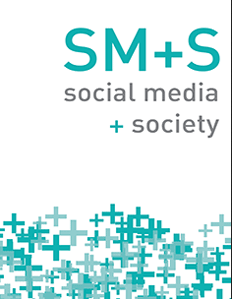Clapping Back on TikTok: Black-Asian Multiraciality and Humor
IF 5.5
1区 文学
Q1 COMMUNICATION
引用次数: 0
Abstract
TikTok has become an important digital space for solidarity among underrepresented groups. However, it is also a space where stereotypes and offensive jokes are proliferated through unique affordances such as “Use This Sound.” For this study, I focused on Black-Asian multiracials known as “Blasians” and how they used TikTok. I analyzed 56 videos, 47 by Blasian creators and nine by non-Blasian creators, using content analysis and Berger’s typology of 45 humor techniques to uncover common themes and strategies employed by Blasians and non-Blasians on TikTok. Three major findings emerged from the data: First, unlike most social media platforms, the majority of my sample was created by Blasians themselves, with more than half of these videos directly or indirectly referencing racist experiences the creator had encountered using techniques like facetiousness, stereotypes, and wordplay suggesting that a Blasian-specific culture is emerging on TikTok, mirroring elements of Black Twitter. Second, Blasians often relied on monoracial Black and monoracial Asian stereotypes in their videos, demonstrating the multiple dimensions of how they are targeted. Third, non-Blasians relied on Blasian-specific stereotypes, highlighting novel ways in which other minoritized racial groups are racializing Blasians. Taken together, my study sheds light on the racialization process of a growing racial group, the emergence of a digital Black-Asian multiracial culture, and how TikTok united a diverse and broad ethnoracial group.在抖音上鼓掌:黑人-亚洲的多种族性和幽默
TikTok已成为弱势群体团结一致的重要数字空间。然而,这也是一个通过“使用这个声音”等独特的提示来扩散刻板印象和冒犯性笑话的空间。在这项研究中,我关注的是被称为“白种人”的黑人-亚洲多种族,以及他们如何使用TikTok。我分析了56个视频,其中47个由白人创作者创作,9个由非白人创作者创作,使用内容分析和伯杰对45种幽默技巧的类型学,来揭示白人和非白人在TikTok上使用的共同主题和策略。数据中出现了三个主要发现:首先,与大多数社交媒体平台不同,我的样本中的大多数都是由blasiians自己创建的,这些视频中有一半以上直接或间接地引用了创作者遇到的种族主义经历,使用了幽默、刻板印象和文字游戏等技巧,表明TikTok上正在出现一种特定于blasiians的文化,反映了黑人Twitter的元素。其次,白人在他们的视频中经常依赖单一的黑人和单一的亚洲人的刻板印象,这表明他们是如何被针对的多维度。第三,非白种人依赖于白种人特有的刻板印象,突出了其他少数种族群体将白种人种族化的新方式。综上所述,我的研究揭示了一个日益壮大的种族群体的种族化过程,一个数字黑人-亚洲多种族文化的出现,以及TikTok如何团结一个多元化和广泛的种族群体。
本文章由计算机程序翻译,如有差异,请以英文原文为准。
求助全文
约1分钟内获得全文
求助全文
来源期刊

Social Media + Society
COMMUNICATION-
CiteScore
9.20
自引率
3.80%
发文量
111
审稿时长
12 weeks
期刊介绍:
Social Media + Society is an open access, peer-reviewed scholarly journal that focuses on the socio-cultural, political, psychological, historical, economic, legal and policy dimensions of social media in societies past, contemporary and future. We publish interdisciplinary work that draws from the social sciences, humanities and computational social sciences, reaches out to the arts and natural sciences, and we endorse mixed methods and methodologies. The journal is open to a diversity of theoretic paradigms and methodologies. The editorial vision of Social Media + Society draws inspiration from research on social media to outline a field of study poised to reflexively grow as social technologies evolve. We foster the open access of sharing of research on the social properties of media, as they manifest themselves through the uses people make of networked platforms past and present, digital and non. The journal presents a collaborative, open, and shared space, dedicated exclusively to the study of social media and their implications for societies. It facilitates state-of-the-art research on cutting-edge trends and allows scholars to focus and track trends specific to this field of study.
 求助内容:
求助内容: 应助结果提醒方式:
应助结果提醒方式:


